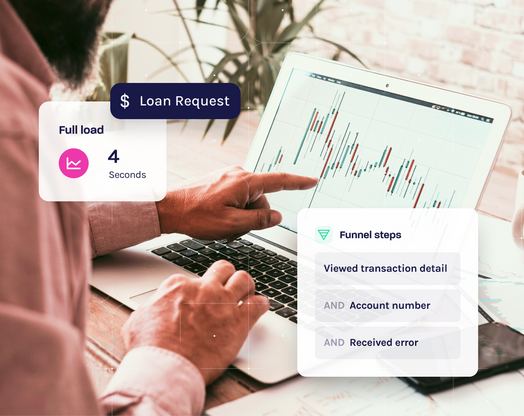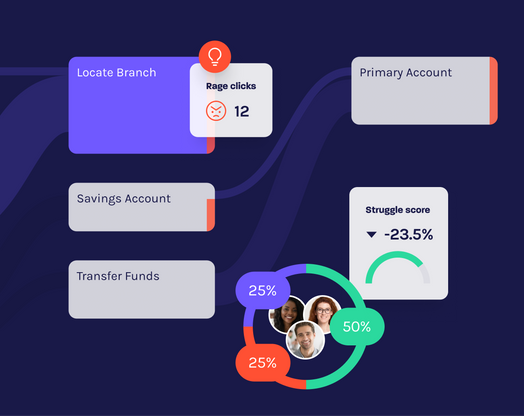
3 ways retailers can deliver an A+ back-to-school digital experience
Satisfying digital back-to-school shoppers
Retailers have less time to prep for back-to-school shopping than ever. In fact, 29% of shoppers have already started – and that will ramp quickly through July and August. This year, eager buyers are all about price, availability and ease, creating new pressures on retailers to stand out among hungry competitors.
Below are three areas to focus on to turn would-be shoppers into happy customers.
1. Optimize for the early, price-conscious buyer
Almost 40% of back-to-school purchases will be $100-250, down 9% from 2021, showing the squeeze from inflation. About half of consumers also say they’re snapping up supplies earlier because they’re worried about costs going up.
They’re also comparing prices to get the best deal. Seventy-six percent of online shoppers will even add items to their carts to wait and see if they go on sale before purchasing. Consumers also want to buy multiple items from one site. Another closely-aligned reason for early shopping is supply chain worries: 23% of consumers said they’re getting an earlier start because of it.
Smart retail moves:
- 80% of shoppers want personalized promotions and experiences. Drive them to checkout by tracking their past behavior and preferences and building a customized journey.
- Ensure your promo codes are active and working correctly. If they’re not, it’s a surefire way to annoy would-be buyers and a straight path to abandoning their cart.
- Optimize your search feature – it’s one of the most critical functions for focused shoppers to find relevant information, products of interest or get help (it’s also a big reason for visitors to leave your site if it’s not functioning properly).
- Almost half of consumers want to research the products they’re buying (yes, even school supplies). Add in comparison charts and product specifics to make the decisions easier.
2. Fortify all of your retail channels (especially digital)
Consumers are doing back-to-school buying everywhere as we emerge from the pandemic: in-store only (42%); online only (17%); but the bulk will use a combination of both (41%). Of those who are shopping digitally, almost one-third are using third-party apps, 24% will use websites and 19% will opt for store apps.
Another factor to consider: Parents are using apps to compare pricing in-store, make last-minute purchases and shop with their kids. The experience across all channels needs to be branded, seamless and easy. Another reason to value these shoppers highly: Omnichannel customers have a 30% higher CLV than those who shop only one channel.
Smart retail moves:
- Take advantage of buying in the moment with one-click purchasing, headless checkout and other easy buying options so no matter where your customer is, they can get their shopping done.
- Create a branded experience across channels, connecting the in-store advertising with digital coupons and incentives wherever possible.
- 67% of customers have recently taken advantage of BOPIS (buy-online-pickup-in-store). If you’re implementing this feature, build a strong omnichannel experience primed for it.
- Ensure that customer analytics from all of your digital channels (and in-store, if available) can be integrated and viewed to get a 360-degree view of their experience to address any issues.
3. Customer service at your service
One of the biggest pet peeves for customers universally is a poor customer service experience. This is especially true in back-to-school shopping season, when parents are short on time and have long lists to get through. More than 33% of customers say that explaining their problems to multiple people results in poor customer service.
Conversely, according to this Salesforce report, almost all consumers say they are apt to make multiple purchases after a great customer service experience. Bottom-line, investing in help resources and technology pays off – literally.
Smart retail moves:
- Integrate your customer service with CRM so that whether it’s a chat, phone call or email, the contact center staff has real-time insight into the problem, whether it’s a mobile or desktop journey.
- Consider capabilities to alert business units on emerging customer service issues and the “fix” for them. If possible, share session replays.
- Make returns as easy as possible. The majority of consumers will buy again from the retailer if the product return process is painless. Consider free return shipping and as few online steps as possible to reduce friction points.
- Get a head start on issues revealed in voice of the customer (VoC) feedback to tackle UX and behavioral problems before they happen during shopping season.
Doing your homework pays off
Putting the effort into a great shopping experience means more customers and more revenue. Often, it’s not one friction point that will get a potential customer annoyed and leave your store, website or app – it’s the cumulative effect – and once they leave they usually won’t come back. Understanding the “why” makes all the difference to resolve issues.
Explore how Glassbox digital experience analytics can help create a seamless back-to-school shopping experience and boost conversions and loyalty. Request a demo today.







